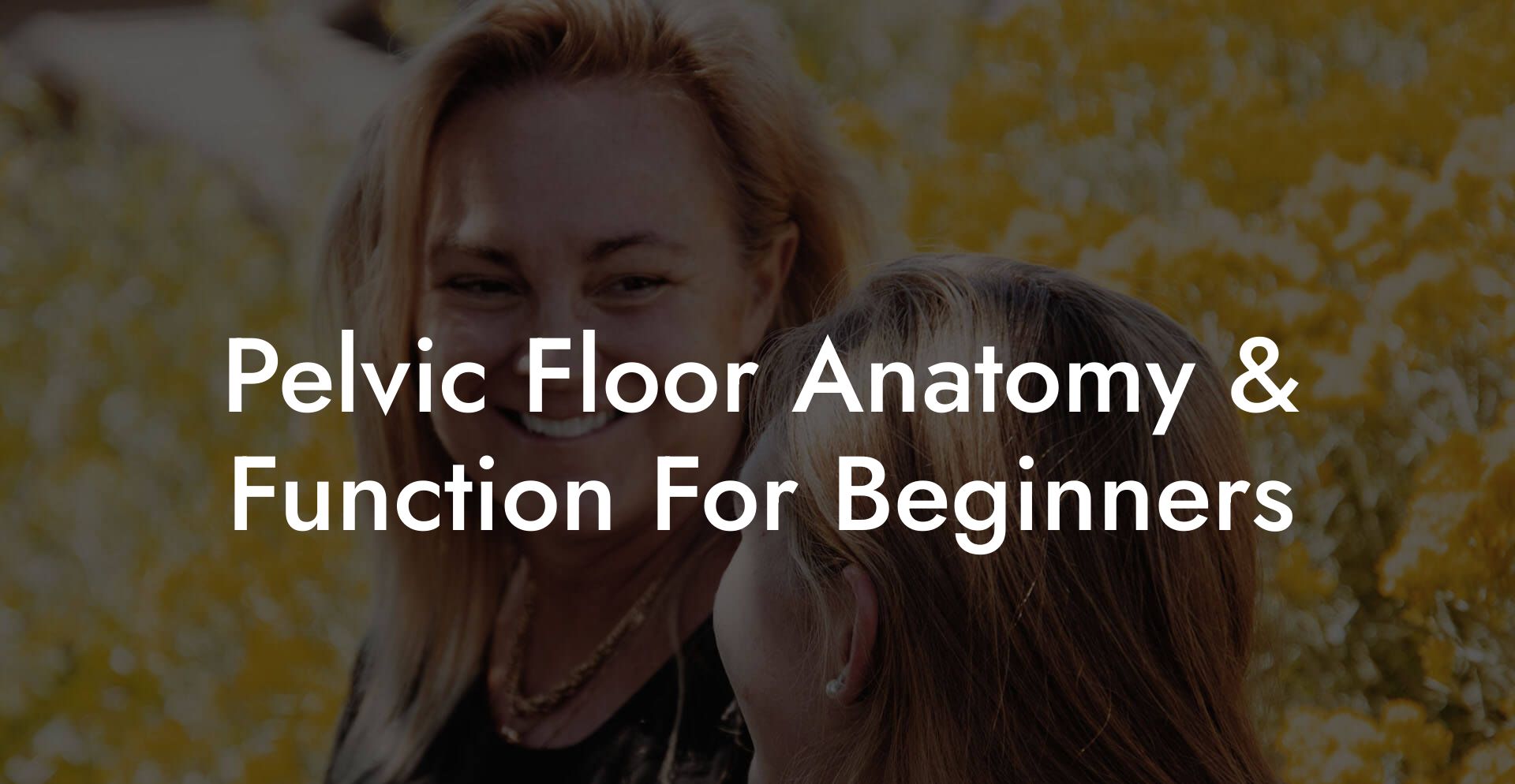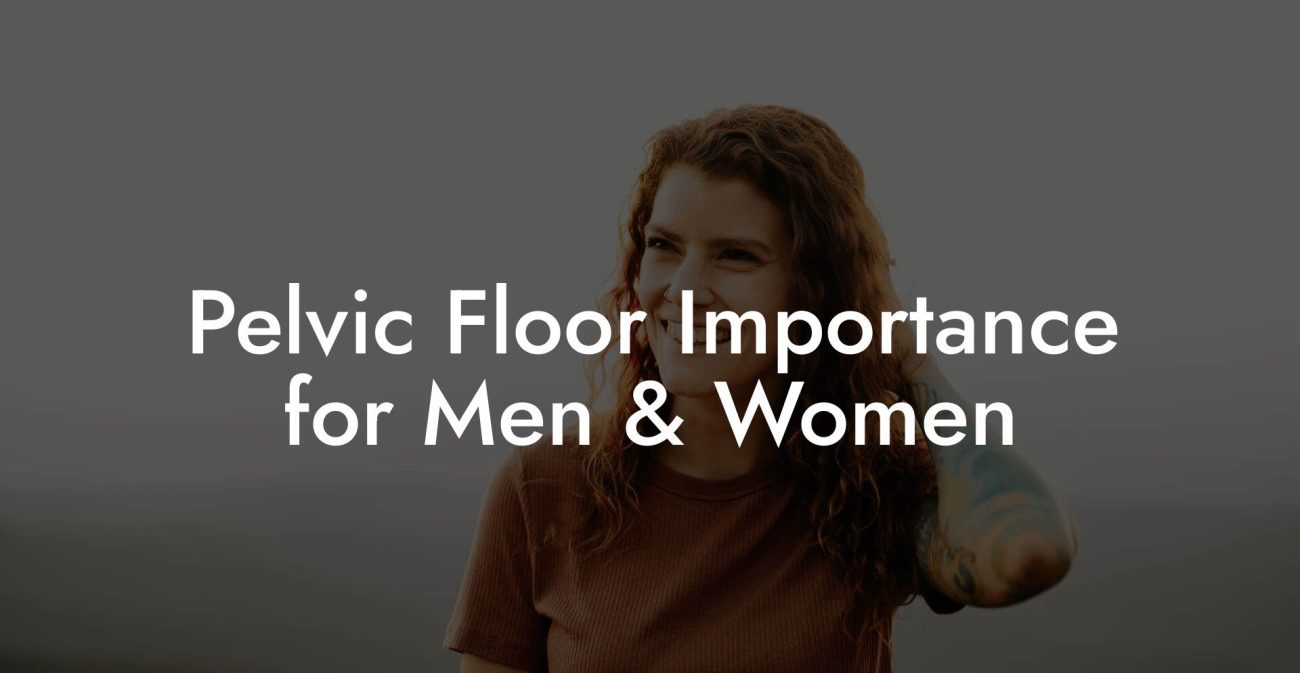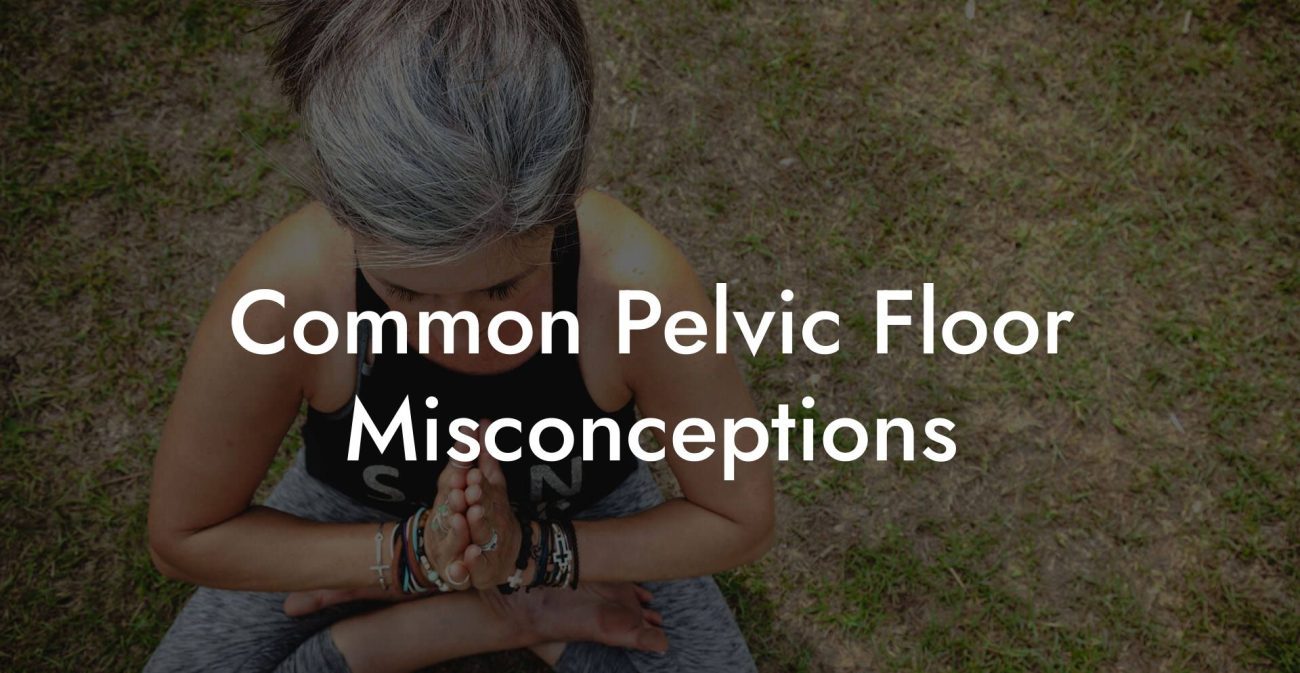
Pelvic Floor Therapy
Pelvic Floor Anatomy & Function For Beginners

Ever wondered what’s really going on down there when you laugh, cry, or do that funky dance move you love? Let’s dive into the surprising universe of your pelvic floor, a network of muscles, ligaments, and connective tissues that quietly support your organs, power some of your best moves, and even play a role in your overall mojo. Whether you’re a total newbie or a millennial seeking to upgrade your core game, this guide to pelvic floor anatomy and function is here to spill the deets in a fun, honest, and refreshingly real way.
Quick Links to Useful Sections
- Demystifying the Pelvic Floor: Anatomy 101 For Beginners
- The Cast of Characters: Your Pelvic Floor’s Key Components
- The Levator Ani Muscle Group
- The Coccygeus Muscle
- Supporting Ligaments and Fascia
- The Unsung Functions: What Your Pelvic Floor Really Does
- Support for Core Organs
- Control and Continence
- Sexual Function and Pleasure
- Posture and Stability
- Pelvic Floor Health: Why It’s Worth Your Attention
- The Science of Pelvic Floor Exercises: Get Moving, Get Grooving
- Mastering Kegels
- Beyond Kegels: Variety Is the Spice of Life
- Common Pelvic Floor Disorders: What Can Go Wrong?
- Urinary Incontinence
- Pelvic Organ Prolapse
- Chronic Pelvic Pain
- Pelvic Floor Therapy: When to Seek Professional Guidance
- Lifestyle Hacks for Rock-Solid Pelvic Floor Health
- Stay Active with Low-Impact Movement
- Ergonomics and Posture
- Nutrition for Pelvic Wellness
- Stress Less, Laugh More
- Building a Personalized Pelvic Floor Routine: Tips and Tricks For Beginners
- Step 1: Self-Assessment and Goal Setting
- Step 2: Mix It Up With Varied Exercises
- Step 3: Establishing a Consistent Routine
- Step 4: Listen to Your Body (And Trust Your Gut)
- Step 5: Keep It Fun and Engaging
- Integrative Strategies For Expanding Your Pelvic Floor Toolbox
- Resources and Community Support: Your Next Steps
- Frequently Asked Questions About Pelvic Floor Anatomy & Function For Beginners
- Your Journey to Confident and Empowered Pelvic Health
Demystifying the Pelvic Floor: Anatomy 101 For Beginners
Picture your pelvic floor as the unsung hero of your body, a hammock of muscles stretching like a supportive net at the base of your pelvis. This intricate system is comprised of layers of muscle fibers, fascia, ligaments, and even nerve networks that work together to keep your pelvic organs (bladder, uterus/prostate, rectum) snugly in place.
In anatomical speak, the pelvic floor is often referred to as the pelvic diaphragm. But don’t let fancy names fool you, it’s as down-to-earth as the carpet under your feet. This support system isn’t just about holding things in position; it’s also fundamental for functions like bladder control, bowel movements, and yes, even spicing up your love life.
Understanding your pelvic floor anatomy is like having the cheat codes to later level up your pelvic floor health. The more you know about the muscles and structures that keep everything in harmony, the better you can take care of them with targeted pelvic floor exercises and therapy.
The Cast of Characters: Your Pelvic Floor’s Key Components
Let’s break down the star players of your pelvic floor:
The Levator Ani Muscle Group
This group is the powerhouse of the pelvic floor, consisting of muscles like the pubococcygeus (PC), puborectalis, and iliococcygeus. Think of them as the guardians of pelvic stability, crucial for bladder control and core strength. When you do your pelvic floor exercises (hello, Kegels!), these muscles get a top-notch workout.
The Coccygeus Muscle
Often working in tandem with the levator ani, the coccygeus helps support the coccyx (your tailbone) and contributes to the overall stability and function of your pelvic floor. It might not steal the spotlight, but it’s an essential performer in the production of robust pelvic health.
Supporting Ligaments and Fascia
Beyond muscles, your pelvic floor is reinforced by ligaments and connective tissues that provide additional support to the pelvic organs. They help maintain the structural integrity of the pelvic area, ensuring that everything stays in its rightful place, even during your wildest dance parties.
Each of these components plays a critical part in creating a solid foundation for your core, underpinning not only functionality but also overall well-being. By knowing your pelvic floor’s anatomy, you can better appreciate why targeted pelvic floor therapy and exercises are so important.
The Unsung Functions: What Your Pelvic Floor Really Does
The pelvic floor isn’t just about keeping things tight, its functions are as diverse as your Spotify playlist. Here’s a closer look at its multifaceted role:
Support for Core Organs
Imagine your organs having a natural, built-in seat that keeps them in place and working optimally. That’s your pelvic floor in action! By providing physical support to the bladder, uterus or prostate, and rectum, it helps prevent issues like prolapse and other dysfunctions that can impact your overall health.
Control and Continence
The pelvic floor muscles are the gatekeepers of continence. They contract and relax to control the flow of urine and feces, maintaining urinary and bowel control. When these muscles are weak or uncoordinated, you might experience issues like incontinence, a common reason why pelvic floor therapy is a game changer.
Sexual Function and Pleasure
Beyond the basics, a strong and responsive pelvic floor can enhance sexual function. For many, targeted pelvic floor exercises improve sensation and orgasm strength, yes, your pelvic floor plays a role in spicing up those intimate moments, making pelvic floor health a topic of interest for Gen-Z and millennials alike.
Posture and Stability
Ever noticed how a strong core improves your stance and overall balance? The pelvic floor is part of that core stability package. It works in concert with your abdominal and back muscles to support proper posture, helping you avoid that slumped look and chronic back pain.
Understanding these critical functions demystifies why many fitness experts, physiotherapists, and pelvic floor therapists emphasize these exercises as part of a holistic approach to health.
Pelvic Floor Health: Why It’s Worth Your Attention
Let’s be real: talking about pelvic health can feel a bit taboo, but it’s a conversation that needs to be had. Not only does a healthy pelvic floor support everyday functions, but it also plays a massive role in your overall quality of life. For beginners, learning the ins and outs of pelvic floor health is the first step in reclaiming control and achieving optimal wellness.
When pelvic floor muscles weaken or lose coordination, a multitude of issues can arise, from urinary incontinence and pelvic pain to a decrease in sexual satisfaction. These problems don’t discriminate; they affect individuals of all genders and ages. This guide is designed to help you navigate the pitfalls and empower you with practical, evidence-based tips to strengthen your pelvic floor.
Maintaining pelvic floor health is not just about crunches and Kegels; it’s a multifactorial journey that involves understanding anatomy, embracing targeted exercises, and making informed lifestyle choices. So, strap in, get comfortable, and prepare to take control of your pelvic floor like the boss you are.
The Science of Pelvic Floor Exercises: Get Moving, Get Grooving
When it comes to pelvic floor exercises, you might have heard of Kegels, those famous contractions that everyone seems to overshare about on social media. But there’s a whole world beyond the basic squeeze and release. Understanding the variety of pelvic floor exercises available can help you target different muscle groups, avoid plateaus, and even inject a bit of fun into your routine.
Mastering Kegels
Kegels are the poster child for pelvic floor exercises, but they’re not just for postnatal care. By engaging the muscles that stop urine midstream (yes, those are your pelvic floor muscles), you can enhance their strength and endurance. The key to Kegels is proper technique, start by finding the right muscles (hint: it’s the ones you use to avoid an accidental leak during a sneeze), then practice controlled, deliberate contractions.
For beginners, aim for sets of 10 squeezes with a few seconds of hold time between each contraction. Over time, you’ll build both strength and muscle memory. Just remember, if it feels awkward at first, you’re not alone. Like learning any new dance, practice makes perfect.
Beyond Kegels: Variety Is the Spice of Life
While Kegels are a superb starting point, incorporating a range of pelvic floor exercises can help ensure balanced strength. Reverse Kegels, for instance, focus on relaxing and lengthening the pelvic floor. This exercise is particularly helpful if you often experience tension or overactivity in these muscles, a common issue among stressed-out Gen-Zers and busy millennials.
There are also integrated core stability workouts that engage the pelvic floor as part of a comprehensive movement routine. Pilates, yoga, and even certain functional strength exercises can double as pelvic floor work, offering a holistic approach to building pelvic health. Think of it as multi-tasking for your muscles: you’re not only sculpting a killer core but also ensuring that your pelvic floor remains robust.
By diversifying your routine, you keep your workouts fresh, engaging, and, most importantly, effective. So go ahead and experiment, your pelvic floor will thank you for every squeeze and stretch.
Common Pelvic Floor Disorders: What Can Go Wrong?
As much as we love our pelvic floor when it’s strong and agile, sometimes it can throw a tantrum. Pelvic floor disorders are more common than you might think, affecting countless individuals at different life stages. Here’s a quick rundown on some conditions you might encounter:
Urinary Incontinence
Perhaps the most talked-about issue, urinary incontinence occurs when the pelvic floor muscles are too weak or not coordinated enough to control bladder leakage. Not exactly the conversation starter at parties, but it’s a prevalent issue that can impact quality of life.
Pelvic Organ Prolapse
This happens when pelvic organs, such as the bladder, uterus, or rectum, drop or press into the vaginal wall (or other adjacent structures) due to weakened support. It’s like when your favorite pair of sneakers lose their shape, they just don’t function the same way anymore.
Chronic Pelvic Pain
Chronic pelvic pain can stem from a variety of issues, including muscle overactivity, nerve entrapment, or previous trauma. The pain can be persistent, making daily activities challenging and often prompting a search for multi-faceted treatment options.
Recognizing these disorders early on is key to taking action. Whether through pelvic floor therapy, targeted exercises, or integrative treatments, addressing these issues head-on can lead to significant improvements in everyday life.
Pelvic Floor Therapy: When to Seek Professional Guidance
Sometimes, your pelvic floor may need more than just a home workout, it might require a professional touch. Pelvic floor therapy is a specialized area where trained physical therapists assess, diagnose, and treat pelvic floor dysfunction through a mix of exercises, manual techniques, and patient education.
If you’re experiencing frequent leakage, pelvic pain, or discomfort during everyday movements, a session with a pelvic floor therapist might be just what you need. These experts use techniques like manual therapy, biofeedback (yes, those snazzy devices that show you real-time muscle activity), and individualized exercise programs to help restore balance and function.
Remember, seeking help is a sign of strength. Just as you wouldn’t ignore a creaky bike or a wonky laptop, taking prompt action on pelvic floor issues can prevent further complications down the road.
Lifestyle Hacks for Rock-Solid Pelvic Floor Health
We get it, modern life is busy. Between Zoom calls, side hustles, and binge-watching your favorite shows, who has time to think about pelvic floor health? But here’s the kicker: small lifestyle tweaks can yield big benefits for your pelvic floor.
Stay Active with Low-Impact Movement
Not all workouts have to be high-intensity boot camps. Activities like walking, swimming, and yoga are gentle on the pelvic floor while still promoting overall strength and flexibility. Incorporating these into your daily routine not only helps you stay fit but also keeps your pelvic support system happy.
Ergonomics and Posture
If you’re glued to your desk for hours on end, maintaining good posture and ensuring your workspace is ergonomically friendly can relieve unnecessary pressure on your pelvic floor. A well-aligned spine supports all the muscles around your core, including that unsung hero down below.
Nutrition for Pelvic Wellness
The food you eat matters. A diet rich in anti-inflammatory foods, lean proteins, and fiber supports tissue repair and overall muscle function. Hydration is equally important, keeping your body well-hydrated ensures that your muscles and connective tissues maintain their elasticity.
Stress Less, Laugh More
Chronic stress can wreak havoc on your muscles, including those in your pelvic floor. Incorporate stress-management techniques into your routine, be it meditation, laughter yoga, or just a good old-fashioned chat with friends. Your pelvic floor will thank you for the break from tension.
These lifestyle hacks make pelvic floor care a seamless part of your everyday hustle. It’s all about balance, both in life and in muscle strength.
Building a Personalized Pelvic Floor Routine: Tips and Tricks For Beginners
Every body is different, and the same goes for your pelvic floor needs. Creating a personalized routine may sound intimidating, but it doesn’t have to be. Whether you’re just starting with basic pelvic floor exercises or looking to incorporate integrative therapy practices, here are some practical tips to build a routine that works for you:
Step 1: Self-Assessment and Goal Setting
Before diving in headfirst, take a moment to assess your current pelvic floor function. Do you experience occasional leaks? Is there discomfort during routine physical activity? Setting clear, achievable goals, like improving bladder control or reducing pelvic tension, can help tailor your routine.
Step 2: Mix It Up With Varied Exercises
Variety isn’t just the spice of life, it’s key to comprehensive pelvic floor therapy. Combine traditional Kegels with reverse contractions, and integrate movements from yoga or Pilates that target the core and pelvic muscles. Experiment with routines until you find what feels right.
Step 3: Establishing a Consistent Routine
Consistency is your best friend when it comes to any exercise regimen. Dedicate specific times each day for your pelvic floor workouts, whether it’s during your morning coffee or as a destressing evening ritual. Consider using apps or setting reminders, any tool that helps you stay accountable.
Step 4: Listen to Your Body (And Trust Your Gut)
Your body communicates through sensation. If an exercise feels off or causes discomfort, modify it or consult a professional. It’s all about learning, adapting, and gradually building strength.
Step 5: Keep It Fun and Engaging
Turn your pelvic exercises into a mini dance session or a mindfulness challenge. Add upbeat music, track your progress, and even join online communities where you can swap tips and celebrate victories. A lively routine is more likely to stick than a monotonous one.
A personalized pelvic floor routine isn’t just about the exercises, it’s about creating a lifestyle that honors your body’s unique needs. With patience and persistence, you’ll build a routine that empowers you from the inside out.
Integrative Strategies For Expanding Your Pelvic Floor Toolbox
For those who love a holistic approach, combining traditional pelvic floor exercises with integrative therapy practices can elevate your health journey. Think of it as upgrading your pelvic floor firmware with a blend of modern techniques and ancient wisdom.
Consider incorporating mindfulness practices like yoga or tai chi to improve the mind-muscle connection. These activities not only promote physical strength but also help relieve stress, a notorious culprit behind pelvic floor tension. Add some nutritional strategies into the mix, emphasizing foods that reduce inflammation and bolster muscle recovery.
Whether you’re new to pelvic floor therapy or already on your journey, integrating these strategies empowers you to address both the physical and mental aspects of pelvic health. It’s about building a resilient, flexible, and empowered foundation that supports you in every aspect of life.
Resources and Community Support: Your Next Steps
Knowledge is power, but community is even better. As you embark on your journey to pelvic floor wellness, remember that you’re not alone. Countless online forums, professional groups, and social media communities are dedicated to sharing tips, success stories, and encouragement.
Whether you join a Facebook group for pelvic floor enthusiasts, subscribe to an engaging YouTube channel dedicated to pelvic health, or seek advice from a trusted pelvic floor therapist, these resources can provide support and inspiration. They offer practical insights into effective exercises, nutritional tips, and real-life strategies tailored for every lifestyle.
Many experts also offer virtual consultations, making it easier than ever to get professional guidance regardless of where you live. So, take advantage of the wealth of resources at your fingertips. Dive into podcasts, blogs, and webinars that demystify pelvic floor therapy, and connect with others who are taking charge of their health.
Your next steps might include setting up that first consultation, trying a new workout routine, or simply joining an online community where you can exchange ideas. Remember: every small step is progress, and your journey to empowered pelvic floor health is one of many exciting adventures.
Frequently Asked Questions About Pelvic Floor Anatomy & Function For Beginners
We know you’ve got questions, after all, this is one of the most underrated parts of the body that deserves a standing ovation. Check out these frequently asked questions to get some more clarity on pelvic floor anatomy and function.
1. What exactly is the pelvic floor, and why is it so important?
The pelvic floor is a network of muscles, ligaments, and connective tissues that supports your pelvic organs, aids in bladder and bowel control, and contributes to sexual function. Maintaining its strength is key to overall core stability and health.
2. How do I know if my pelvic floor muscles need strengthening?
Common signs include urinary incontinence, discomfort during activities, or lower back pain. If you experience any of these, it might be time to evaluate your pelvic floor health with targeted exercises or professional guidance.
3. Are Kegel exercises effective for everyone?
Kegels are a great starting point for many people. However, every body is unique. Combining Kegels with reverse exercises and integrated core workouts can provide more comprehensive support for your pelvic floor.
4. How often should I perform pelvic floor exercises?
Consistency is key. Most experts recommend incorporating pelvic floor exercises into your routine daily. Starting with short sessions that gradually increase in length and intensity is a great way to build muscle strength over time.
5. Can lifestyle changes really improve pelvic floor health?
Absolutely. Diet, hydration, low-impact exercise, posture improvements, and stress management all contribute to better pelvic floor function and overall well-being.
6. Is it necessary to see a pelvic floor therapist?
For many, self-guided exercises work well. But if you experience persistent issues like chronic pain or incontinence, consulting with a pelvic floor therapist can provide personalized assessments and treatment plans.
7. How do integrative therapies fit into pelvic floor health?
Integrative therapies, such as acupuncture, mindfulness, and yoga, address both the physical and mental components of pelvic floor dysfunction. This comprehensive approach enhances the overall effectiveness of traditional exercises.
8. Can I do pelvic floor exercises at work or during a busy day?
Yes! Many exercises, especially discreet ones like Kegels, can be done anywhere. They’re the ultimate “micro-workout” to keep your pelvic floor strong throughout the day.
9. Are there any risks to overdoing pelvic floor exercises?
Like any exercise, moderation is key. Overworking these muscles can lead to tension or discomfort, which is why a balanced routine combining contractions and relaxations is crucial.
10. Where can I find more information and support on pelvic floor health?
There are many trusted online resources, support groups, and professional organizations that focus on pelvic floor health. Engaging with these communities can provide you with continuous guidance and inspiration.
Your Journey to Confident and Empowered Pelvic Health
Embracing the full spectrum of pelvic floor anatomy and function is like unlocking a new level of self-awareness. It’s about understanding the unsung muscles that hold up your world and turning a once-taboo topic into a celebration of strength, control, and overall wellness.
Whether you’re beginning your journey with basic exercises, seeking professional guidance from a pelvic floor therapist, or exploring integrative strategies that blend mindfulness with movement, remember that every step counts. Your pelvic floor is not just a set of muscles, it’s a foundation for your everyday confidence and vitality.
As you proceed, keep in mind that nurturing your pelvic floor health is an ongoing process. Revisit your routine, celebrate small victories, and stay curious about new techniques and research. With humor, persistence, and a dash of daring, you can transform how you feel from the inside out.
So here’s to a future where your pelvic floor works as hard as you do, a future defined by strength, balance, and vibrant well-being. Celebrate your journey, lean into every tip and trick you learn, and know that empowered pelvic health is a vital part of your overall hustle.
Your journey starts now. Get inspired, get moving, and let your pelvic floor be the secret power behind your every move. Cheers to a healthier, happier you!
Curious About Your Pelvic Floor? Explore our curated collection of insightful articles to learn more and take charge of your health.
- Pelvic Floor Basics
- Pelvic Floor Exercises & Workouts
- Pelvic Floor Kegel Exercises: Techniques & Benefits
- Advanced Pelvic Floor Workouts
- Pre/Post-Natal Pelvic Floor Routines
- Pelvic Floor Exercises for Men
- Pelvic Floor Therapy Techniques
- At-home vs Professional Pelvic Floor Therapy Options
- Diet & Lifestyle for a Healthy Pelvic Floor
- Pelvic Floor Health & Wellness
- Specialized Pelvic Floor Conditions & Treatments
Now back to the main article!






